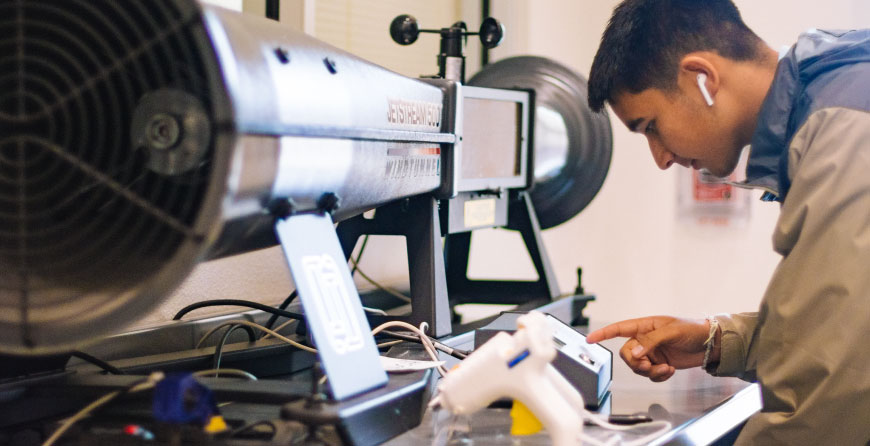Anyone who has been introduced to the general ignorance of popular culture science fiction has seen machines bringing about the end of the world. Yet today, AI is instead associated with spam filters, speech recognition for virtual assistants and recommendation systems rather than Skynet thanks to the work of Machine Learning Engineers.
So, in layman terms, machine learning engineering is essentially developing computers that are capable of learning on their own from data that is provided to them. They use the data to build and program their neural network to work with data. While often confused with terms such as Deep Learning, AI (Artificial Intelligence), Pattern Recognition, it can be summarised as follows: Machine Learning is a subset of Artificial Intelligence and inversely, it is a superset of deep learning. As for pattern recognition, machine learning is an evolution of both pattern recognition and computational theory and while it bears certain similarities to data science, there are clear differences between the two.
So, for aspiring Machine Learning Engineers, this article will cover the working of Machine Learning, the differences between Artificial Intelligence, Deep Learning and Machine Learning and those who work as Machine Learning Engineers and Data Scientists, the prerequisites to learn how to become a machine learning engineer, the applications of machine learning and the jobs available to machine learning engineers.
Working of Machine Learning
The basic working of machine learning can be understood through the given example.
If one were to try making an autonomous model plane that can not only take off and land but also perform stunts, it would be idiotic to do so without machine learning. For instance, if one tried to create an algorithm or write a program to adjust every controlling surface based on sensory inputs, the amount of working knowledge required on the exact plane’s specifications and the data required for stunts would be outside the scope of any single developers and even if it were, the developing and testing would be far too impractical for most projects.
Moreover, the considerations for adjusting between different models will require revamping. In contrast, machine learning can allow for the model to be just fed data and based on the output from test flights, it can automatically adjust to make up for the difference. As such machine learning engineers and developers only have to write the initial learning program so the software does the heavy lifting involving tweaking the details. As such, it is exponentially more adaptable than without machine learning.
While neural networks can form as a component of machine learning, it is more closely associated with deep learning. While it has been mentioned as being a subset of machine learning, recent developments have readjusted the diagram so that while the relation between machine learning and deep learning is the same, Artificial Intelligence is no longer a superset but rather overlaps with both Machine and Deep Learning.
Yet, regardless of the complexity differences between computer vision and spam filters, they both rely on machine learning. Comparisons Between Related Fields.
As mentioned before, the fields such as Artificial Intelligence and Machine Learning tend to overlap a lot, there are clear differences in regards to working and applications. As such, the differences can be differentiated as follows:
| Artificial Intelligence (AI) | Machine Learning (ML) | Deep Learning (DL) |
|---|---|---|
| Artificial Intelligence focuses on enabling machines to mimic human behaviour. | Study that uses statistical methods to learn through data to make decisions based on precedent. | Deep Learning uses neural networks for tasks such as classifications of data. |
| Artificial Intelligence has been often represented as both a superset of Machine Intelligence and as overlapping with Artificial Intelligence and Deep Learning. | Machine Learning is a superset of Deep Learning. | Deep Learning neural networks for Machine Learning. |
| Artificial Intelligence focuses on computer algorithms along with the components of Machine and Deep Learning that are useful for its goal. | Machine Learning focuses on the statistical methods for studying data to make decisions based on precedent. | Deep Learning focuses on neural networks for tasks such as classification after being adjusted on a training set. |
| The categories include Artificial Narrow Intelligence, Artificial General Intelligence and Artificial Super Intelligence. | The categories include Supervised, Unsupervised and Reinforcement Learning. | The categories include unsupervised pre-trained networks, convolutional neural networks, recurrent neural networks and recursive neural networks. |
Comparisons between Machine Learning and Data Science related fields
| Machine Learning (ML) | Data Science (DS) |
|---|---|
| Machine Learning enables machines to pick up on patterns by using data to learn without being explicitly programmed to do so. | Data Science is the field of study related to extracting information from structured and semi-unstructured data. |
| It uses data science as one of its components but is narrower in study. | Data Science overlaps as a component of Machine Learning while still being a super set to it. |
| The categories of machine learning are: unsupervised learning, reinforcement learning and supervised learning. | Data Science on the other hand can be divided along its processes i.e. data gathering, cleaning, manipulation, etc. |
The differences between Machine Learning and what can be classified as Neural Networks can be understood by comparing their application examples. The first practical application of neural networks that could identify shapes on a 20×20 pixel screen. It involved taking an image that triggers varying brightness across the pixels. The brightnesses are measured and multiplied with its weight and added together. As weights can be negative, the sum isn’t likely to be overly biased depending upon the image size. Based on the sum, ifit meets a certain limit, the deciding neuron may either give an output of 1 or 0. The example presented above only measures across 400 pixels, 1 layer and can give only 2 outputs. However, at present, the neural networks can go up to 100 layers, having 1000 possible outputs and greater accuracy than humans and the complexity has grown to the point where they are now black boxes. While a triumph of neural networks, it does give an idea of how teaching computers to learn on their own can advance. From this, we can understand that while neural networks are an advanced form of machine learning, machine learning is a more umbrella term covering facets outside of neural networks.
Skills For Machine Learning Engineer
The credentials, knowledge and/or skills required to apply for a role as a Machine Learning Engineer can be divided as follows:
Degrees in the following categories
- A Bachelor’s Degree in Computer Science, Mathematics, Statistics or similar degree.
- A Master’s Degree in Machine Learning, Deep Learning, Neural Networks or similar degree.
- A similar degree can be IT, AI or similar degree whose field can overlap with machine learning and whose students can quickly pick up the necessary skills.
Practical Experience in the following categories
- Programming languages that are compatible with Machine Learning such as: Python, R, Java, etc.
- The languages mentioned above possess specific libraries and frameworks best suited to this particular application, as such they are listed here.
- Machine Learning libraries (Matplotlib and Scikit learn), frameworks (TensorFlow and Keras) and packages.
- Big Data Frameworks such as Hadoop, Spark, Pig etc.
Theoretical Knowledge in the following areas
- Data Structure
- Data modelling
- Computer and software architecture
Roles and Responsibilities of Machine Learning Engineers
Machine Learning Engineers can have to work as both software engineers and big data scientists as well as collaborating with them both. Due to this, they often form a crucial part of data science teams, collaborating with the other two groups as well as administrators, analysts, data architects etc. As such, they work on both the end of the program, building predictive AI algorithms while working on data analysis. As such, they can act as a bridge between the two separate groups. Outside of this, the roles can be listed as follows:
Data Oriented Tasks:
- To find appropriate datasets for training a Machine Learning model.
- Verifying the data quality for the model.
- Transforming and converting the science prototypes.
Machine Learning oriented tasks
- Implementing AI or ML algorithms.
- Performing statistical analysis and running tests on the Machine Learning model and fine-tuning the models using test results.
The Salary of Machine Learning Engineers
The average, minimum and maximum salary of a Machine Learning Engineer is often dependent on factors like geography that determines job opportunities, cost of living, etc.
As such, the salaries have to be listed on the basis of country. For instance,
The US
- The average salary of Machine Learning Engineers: $140K
- The maximum salary of Machine Learning Engineers: $180K
- The minimum salary of Machine Learning Engineers: $110K
Canada
- The average salary of Machine Learning Engineers: $135K
- The maximum salary of Machine Learning Engineers: $185K
- The minimum salary of Machine Learning Engineers: $98.7K
The UK
- The average salary of Machine Learning Engineers: £60K
- The maximum salary of Machine Learning Engineers: £80K
- The minimum salary of Machine Learning Engineers: £49.6K
India
- The average salary of Machine Learning Engineers: ₹1.4M
- The maximum salary of Machine Learning Engineers: ₹3M
- The minimum salary of Machine Learning Engineers: ₹900K
Common Interview Questions for Machine Learning Engineers
The hiring of applicants for a machine learning engineer often occurs in stages. Initially, their base knowledge is tested, followed by a more practical oriented test which generally involves solving some form of machine learning problem. This is generally followed by some form of direct interview to accurately assess those who pass the initial tests And judge whether they are suitable. At the beginning or initial tests, the questions asked are often in regards to the basics of machine learning. These include:
- Explain about the relations between bias and variance.
- Explain about the different types of machine learning.
- Explain about the decision tree and how it is pruned.
- What is the proper application of classification and regression?
- What is the use of Bayes’ theorem in machine learning?
The questions above are purely theoretical, used to judge whether the applicant for a machine learning engineering role has at least a working knowledge of the theoretical aspect. The next set of questions below are meant to be both answered in terms of steps and demonstrated to the interviewer. These include:
- How would you build a data pipeline?
- How would you make a decision tree?
- If a given model has low bias and high variance, how would you correct this situation and what algorithm would you use?
- What is your favourite algorithm in machine learning? Demonstrate it in code and justify.
- How would you build a spam system/spam filter/any similar device that would require automated and evolving decision making.
A lot of interviews also give some use-cases to applicants of a machine learning engineer role to judge how well they can adapt to new situations and a complete answer or solution might be unnecessary if they can create a project plan on how to solve the problem. Some of the questions can include:
- Run a PCA on a dataset that you are aware of that has highly correlated data.
- If an algorithm is provided, try writing a pseudocode for parallel implementation.
- Outside of the presented questions above, and questions above, interview questions for machine learning engineering can take the form of more personalised questions in the form of their previous experience as a machine learning engineer or researcher along with their personal opinions on the same. Some of the possible questions include:
- How do you stay up to date in machine learning engineering and other fields of knowledge?
- What projects have you worked on as a machine learning engineer and please explain them.
- As a machine learning engineer, what steps do you take to communicate with technical personnel (data scientists and software engineers) and non-technical personnel (administrators and clients)?
- Mention any particular issues you’ve had as a mechanical learning engineer and how did you handle it?
Describe some of the tools that you’ve used in big data tools and machine learning in the form of libraries, frameworks and packages as a machine learning engineer.
Conclusion
Machine learning engineering may be an end goal, but for many aspiring to become a machine learning engineer, this isn’t the only one. The roadmap for becoming a competent machine learning engineer often requires a lot of additional skills to support it. As such, whether it is a software developer, data analyst or scientist or any other role, a machine learning engineer can adapt to it. Outside of that, if they insist on a career of being a machine learning engineer, they would be one of the most skilled technical professionals in the workforce today, with the prestige and salary to match.







